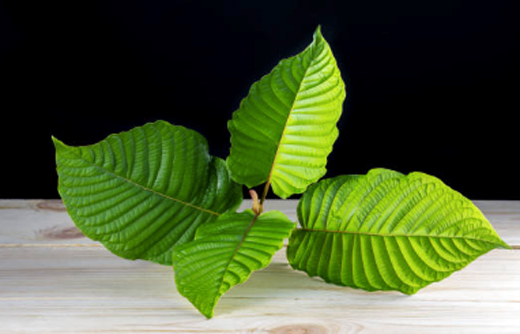Kratom - an emerging drug of abuse
Kratom - an emerging drug of abuse
Mangalore Today News Network
By Dr G. ShreeKumar Menon
Manipal, Oct 25, 2019: Kratom or Indonesia’s ‘Miracle tree’ is a tropical tree (Mitragyna speciosa) native to Southeast Asia, with leaves that contain compounds that can have psychotropic (mind-altering) effects. It is extensively found in Thailand, Indonesia, Malaysia, Myanmar, and Papua New Guinea, where it is used in traditional medicines. Kratom has opioid properties and some stimulant effects. It is mainly grown in Kapuas Hulu, West Kalimantan - the centre of production - demand for kratom is such that local farmers have moved away from traditional commodities, such as rubber and palm oil, to growing the tree as a major cash crop.Around 90 per cent of shipments from West Kalimantan province are Kratom that’s sold to the United States. Data from 2016 shows that the region was shipping some 400 tonnes abroad every month - worth about US$130 million (S$176 million) annually at current global prices of US$30 a kilogram.As many as five million Americans use the drug and that number is growing, according to the American Kratom Association. The leaves of kratom, are chewed or brewed as a drink, are used as a stimulant.Kratom is now emerging as a recreational drug of abuse in the Western world.
The leaves of kratom, are chewed or brewed as a drink, are used as a stimulant.Kratom is now emerging as a recreational drug of abuse in the Western world.
Known for its hanging clusters of deep yellow flowers and reaching up to 42 feet in height, kratom has numerous uses in folk medicine. Traditionally, the broad green leaves are plucked by hand and dried in the sun, to be brewed as a tea or pulverized and swallowed with water.
Since the beginning of the 21st century, kratom has increased in visibility around the world. Regular kratom users see it as an invaluable aid for mental and physical health, while others enjoy its dual recreational value as a stimulant or sedative-narcotic.
In the early 1800s, kratom was discovered by Dutch settlers. They brought kratom to Europe and started investigating it. The active constituent of Kratom, Mitragyninewas isolated in 1921 and tested on humans in 1932. It was likened to cocaine for its stimulant effects on the central nervous system. More than 20 alkaloids were isolated during the 1960s and, in 1994, the second of Kratom’s primary active compounds was identified: 7 Hydroxymitragynine. The following year saw the first synthesis of Mitragynine.
Kratom can cause effects similar to both opioids and stimulants. Two compounds in kratom leaves, mitragynine and 7-α-Hydroxymitragynine, interact with opioid receptors in the brain, producing sedation, pleasure, and decreased pain, especially when users consume large amounts of the plant. Mitragynine also interacts with other receptor systems in the brain to produce stimulant effects. When kratom is taken in small amounts, users report increased energy, sociability, and alertness instead of sedation. However, kratom can also cause uncomfortable and sometimes dangerous side effects.

In traditional practices, Kratom is used to boost fertility.It helps in increasing the blood flow and energy level which re-energizes the tired libido. Kratom use can boost sex drive alongside physical stimulation. Green vein/leaf kratom seems to have an all the more elevating impacts, building a stimulus circumstance where sex is increasingly considered.
Kratom has a very bitter taste that prevents people from taking too much.
Like other drugs with opioid-like effects, kratom might cause dependence, which means users will feel physical withdrawal symptoms when they stop taking the drug. Some users have reported becoming addicted to kratom.Reported medical consequences of ingestion of kratom are cholestasis, seizures, hypothyroidism, psychosis, as well as sedation, loss of appetite, constipation, respiratory depression, and other opioid-like side effects. Chronic kratom intake can be followed by opioid-like withdrawal symptoms on cessation of drug use. Physical withdrawal symptoms include tremor, sweating, muscle spasms, hot flashes, watery eyes and nose, decreased appetite, and jerky movements.
Kratom and its metabolites are not detected by a typical drug screen and require special testing.
In India kratom is currently legal, and there is a tree of the Mitragyna family that grows in India. While it has similar properties they aren’t the same as those of kratom, Indian vendors label it as Indian Kratom which is much cheaper. Yet, users have complained about it not being nearly as effective and causing nausea.
Kratom’s legality varies from country to country.Kratom is a controlled or illegal substance in Latvia, Lithuania, Poland, Romania, Russia, Sweden, Turkey, Ireland, UK, Italy and while in Denmark and Finland it is a Controlled Substance yet it can be purchased with a valid doctor’s prescription. In USA it is legal in some States whereas it is illegal in others.
Thailand legalized kratom for medicinal use in December 2018. Kratom is illegal in Japan and South Korea. Its status is unclear in China.
The US Drug Enforcement Agency has classified Kratom as a “substance of concern”, but, the debate goes on as to whether Kratom is a fear-worthy foliage ora beneficial botanical?
 Dr G ShreeKumar Menon, IRS (Rtd) Ph.D (Narcotics) is Former Director General, National Academy of Customs Excise and Narcotics & Multi-Disciplinary School Of Economic Intelligence,India; Fellow, James Martin Center For Non Proliferation Studies, USA; Public Administration, Maxwell School of Public Administration, Syracuse University, U.S.A. and AOTS Scholar, Japan. He can be contacted at: shreemenon48@gmail.com
Dr G ShreeKumar Menon, IRS (Rtd) Ph.D (Narcotics) is Former Director General, National Academy of Customs Excise and Narcotics & Multi-Disciplinary School Of Economic Intelligence,India; Fellow, James Martin Center For Non Proliferation Studies, USA; Public Administration, Maxwell School of Public Administration, Syracuse University, U.S.A. and AOTS Scholar, Japan. He can be contacted at: shreemenon48@gmail.com
- New Synthetic Drugs Trapping Youth
- Mood Modifying Chips - Future of Drug Use
- Ramping up Indo-Bangla border security
- IITM- A premier educational Institution in a forest. What can we learn?
- Former PM, Manmohan Singh: Notable laws passed under his tenure
- Hashish on Ratnagiri Seashore
- The Poor cry out to Us: Do we respond?
- Clandestine Meth Labs Sprouting Across India
- Hydro ganja from Bangkok latest craze among youth in India
- "Memories to Treasure" Dr.Michael Lobo’s new book
- Dominance of Private Universities: Will it make education inaccessible to underprivileged students?
- Monti Phest: A rich heritage of South Canara
- When jails become drug dens
- Kashmir Bhavan in Bengaluru: A must visit place
- "MAI and I" Book of Angelic Emotions
- Draupadi Murmu - The New ’President of India’
- Anthony Ashram in the city grows a classic museum
- First College of Fisheries in India - A Golden Jubilarian
- Flushing Meadows - A Vintage Mansion
- The Colonel�s Bequest
- A Mangalorean PM and his RBI Governor Brother: The Extraordinary story of the Benegal Brothers
- There is no higher religion than Truth: Theosophical Society
- L�affaire - Ashu & Yiju of Mangalore
- Mangalore in Kowloon
- 1568 to 2018 AD: 450 years of Christianity in Mangaluru
- Vice President elect Naidu moves on from nadir to zenith, the phenomenal journey
- Embracing the Outdoors: How Heated Jackets Are Revolutionizing Cold Weather Activities
- Efficient and Sustainable Packaging Solutions with FIBCs
- The Hybrid Kilt Revolution | Where Tradition Gets Trendy
- Affordable Elegance | Embrace Style on a Budget with Cheap Kilts
- Unleashing Style and Functionality | Exploring Tactical Kilts
- Mangalore’s Heroic Lady marks 105th Birthday
- Santa the Christmas spirit
- Geriatric care: Mangalore strikes a fine balance
- The Don Who Made Two Empires to Clash
- CHITRAPUR SARASWATS - A Great Kanara Community
- Our new President Ram Nath Kovind’s significant journey to Rashtrapathi Bhavan
- Marriages made in heaven, big fat weddings made in India
- Eid insight - The giver of glad tidings
- CITY INFORMATION
- TRAVEL
- TOURIST INFORMATION
- HEALTH CARE
- MISCELLANEOUS




 Write Comment
Write Comment E-Mail To a Friend
E-Mail To a Friend Facebook
Facebook Twitter
Twitter  Print
Print 


